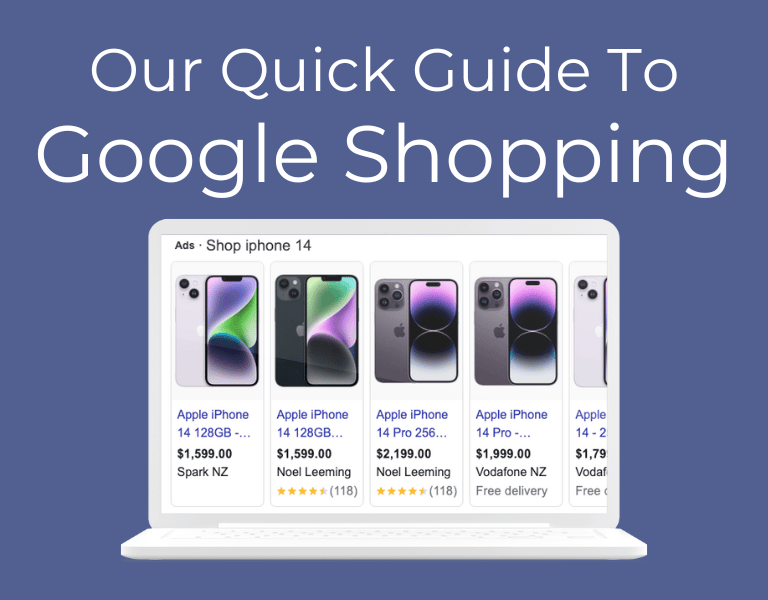The Brilliant Tools to Learn About Your Customers

What’s the key to growing a successful business?
In marketing, it all boils down to one thing: you must learn all you can about your customers.
When you truly understand who your ideal customers are, your marketing strategy enters a whole new level.
You’ll know exactly what kind of content to create, where and when to post it, and how to adapt your offerings to meet their needs.
Luckily, there are loads of brilliant tools available that can help you learn about your customers.
In this blog, we’ll share our favourite tools that have made the biggest difference for our clients
But first, let’s talk about why this matters so much.
Why It’s Crucial To Understand Your Customers
The world of marketing can be a fickle one. Trends come and go overnight, your usual marketing channels are constantly evolving, and how the algorithms work is anyone’s best guess from week to week!
But amidst all this confusion, one thing remains the same – your ideal customer!
Regardless of what changes online, if you truly know and understand your customers, you will stay on the right track with your marketing.
Privacy and ad blockers are examples of the most recent challenges for advertisers in the digital landscape making it harder to understand campaign performance and how to best reach audiences.
But for organisations that have built genuine relationships with their customers, they are able to utilise their existing customer data and insights to adjust their marketing and campaign approaches and apply these in new ways when the landscape change (which by the way we predict is going to accelerate rapidly this year thanks to AI).
Connect with Your Target Audience
Did you know that most of us are exposed to anywhere from 6,000 to 10,000 ads every single day?
Our brains have become experts at filtering out most of this noise. Your mission as a business owner is to create messages that resonate to break through that filter.
When you understand your customers’ real challenges and desires, you can create marketing that feels less like an interruption and more like a helpful conversation.
That’s when people stop scrolling and start paying attention.
The Best Tools To Help You Learn About Your Customers
The great news is that there are some excellent tools out there to help you understand your customers better.
Google Analytics
Google Analytics (GA) is an absolute treasure trove of information. Don’t just use it to find out basic surface info – it’s capable of telling you so much more than just bounce rates and conversions!
It shows you exactly how visitors find you, what pages they look at, and when they decide to either buy something or leave.
Seriously, don’t underestimate the value of GA to learn about your customers. Spend some time learning how to fully utilise this tool, and it will reward you with some real gems.
Quick tip: Make use of URL parameters and you will gain even more insight into how your marketing efforts impact the customer decision making journey.
Google Trends
This tool may not get as much attention as Google Analytics, but it is still an important one to add to the inventory.
Google Trends can help you learn about your customers’ interests. You can see exactly when interest in certain topics peaks throughout the year, compare different search terms, and even narrow results down to your local area in New Zealand.
How we use it: Before planning campaigns for our clients, we look at Google Trends to spot seasonal patterns and comparison across search trends. This helps us both in terms of defining natural sales patterns but also to look for potential gaps we can consider in our marketing efforts
Social Media Analytics
Your social accounts aren’t just for posting content – they’re goldmines of customer information if you know where to look.
Each platform has built-in tools that show you who’s following you, when they’re online, and what content gets them to stop scrolling.
Take Facebook and Instagram, for example. Meta Business Suite lets you see the age, location, and interests of your audience in plain English. You can even discover when your followers are most active, so you know the best times to post.
Why we love it: These insights come from people who already care enough about your business to follow you. That’s valuable information you won’t get from general market research.
Conversation Monitoring
Tools like Brandwatch and Mention act like your ears on the internet. They track when people talk about your business, your industry, or even your competitors across social media, news sites, and forums.
This isn’t just about catching complaints – it’s about understanding how people naturally describe their challenges and what they love about products like yours.
Direct Feedback Tools
Sometimes the best approach is just asking your customers directly what they think.
Tools like Typeform and HotJar make it easy to create quick surveys that people actually want to complete. HotJar also shows you recordings of how visitors use your website, revealing exactly where they get stuck or confused.
Pro Tip: Asking just 2-3 well-crafted questions gets better responses than lengthy surveys. Try asking “What almost stopped you from buying today?” for eye-opening insights.
Stats New Zealand
Don’t overlook traditional resources like Stats NZ for understanding the bigger picture about your potential customers.
Their website provides valuable information about population trends, household income, and regional differences that can help shape your broader marketing strategy.
Ethical Customer Data Collection
With all the recent changes in privacy laws, how you gather information about your customers matters more than ever. Here’s how to do it ethically and effectively:
Ask, Don’t Assume
The most valuable insights come from simply asking your customers directly. Instead of trying to track people without their knowledge, be upfront about what information you’d like and why it would help you serve them better.
We’ve found that most people are happy to share feedback when:
- You make it quick and painless
- You clearly explain how their input will improve their experience
- You actually use their feedback to make meaningful changes
Welcome Direct Feedback
Information that customers voluntarily share with you is pure gold. This includes their preferences, what they’re hoping to accomplish, and feedback on their experience with your business.
Simple questions like “How did you hear about us?” or “What made you decide to buy today?” can provide insights that no amount of data analysis could uncover.
Build Trust Through Transparency
Be open about how you’re using customer information. Clear, straightforward explanations of your privacy practices don’t just keep you compliant with regulations, they also show customers you respect their privacy.
This kind of transparency turns what could be a concern into an opportunity to demonstrate your integrity as a business.
Turning Customer Insights Into Action
Gathering information about your customers is only valuable when you use it to make your business better. Here’s how to turn those insights into real results:
Make Smarter Marketing Decisions
Stop wasting money on marketing channels that don’t reach your ideal customers. If your research shows your audience loves podcasts but rarely uses TikTok, you know exactly where to invest your time and budget.
This targeted approach not only improves your results, it also saves you from spreading your resources too thin across platforms that don’t matter to your business. A mantra of ours at Aligned Media is “Do fewer, better!”
Create Messages That Connect
Use what you’ve learned to speak directly to what your customers care about. This doesn’t need to be complicated, sometimes it’s as simple as using their language rather than industry jargon.
For instance, if you discover your customers talk about “fixing their back pain” rather than “improving spinal alignment,” adjust your messaging accordingly. Small changes like this can make your marketing feel like it’s speaking directly to each person.
Develop Products People Really Want
Your customer research should guide what you offer and how you improve it. When you understand the real challenges your customers face, you can focus your resources on solving those specific problems.
We’ve seen businesses completely transform by simply paying attention to what customers repeatedly ask for, rather than guessing what new features or products might be popular.
The Freedom in Understanding Your Customers
When you truly know what matters to your customers, marketing stops feeling like a frustrating guessing game. You spend less time and money on tactics that don’t work, and more time having meaningful conversations that actually lead to sales.
This doesn’t just improve your business results, it gives you back your time and peace of mind. You can focus on doing what you do best while feeling confident that your marketing is working for you.
You don’t need to become a digital advertising expert overnight. That’s what specialists like us are here for. But having these customer insights gives you a clear direction and the confidence that your marketing investment is being used wisely.
What kind of content will work best for your business? The answer depends entirely on your specific customers. When you use the tools we’ve shared to understand them better, you’ll find it much easier to create marketing that stands out in all the noise.
Next Steps
We use these tools to help our clients build more effective marketing strategies. We also work with businesses to help their teams develop the skills to gather and use customer insights on their own.
Book a call with us today to discuss how deeper customer understanding can transform your marketing effectiveness.






